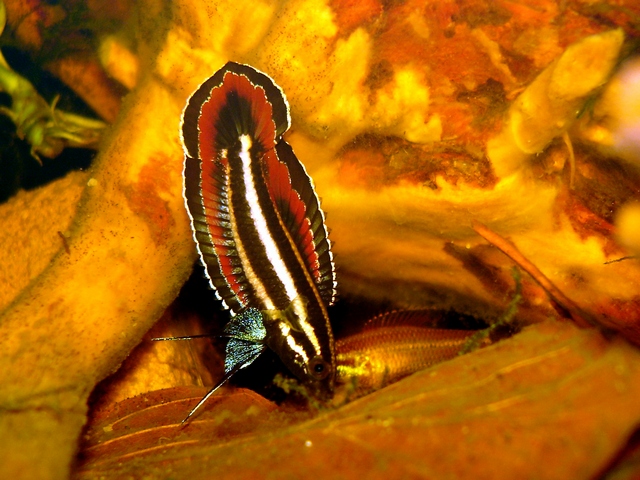(genus Parosphromenus Bleeker)
In a series of chapters, we will try to provide information about this group of fish: their discovery, their natural environment and current threats to their existance. Above all, we introduce the known species which have been described by scientists, give help to recognize them and highlight their special features. In summary,we characterise most of the recently discovered forms for which the status is often unclear: are they separate species, sub-species or just local variants ? We often do not know yet but this is what makes the Licorice Gouramis so exciting.

We are dealing with a fairly homogeneous group of fish many of whose aquarium mysteries are now largely solved, but these species still raise many questions from a scientific point of view: How did their development take place? How can we explain their similarity, or their differences? Are there forms and types we do not know? How are the males of these species able to distinguish between the females when even we have problems doing so? This is especially true for the bintan- or harveyi-group. Or do they in fact mate with other females? This behaviour has sometimes been confirmed, but what does it mean? There are no systematic investigations on this particular topic up to now. It seems to be certain that the process of speciation in many Paro forms is still ongoing. For others it is completed. This leaves a lot of space for scientific research.
Unfortunately time is running out. All species and forms are highly endangered due to their close bonds to their natural habitats, namely the black water swamps in the (primary) rainforest. Often only small remanants of the former swamp areas are available for them and some species try to survive in roadside channels or pond-like structures. All Paro forms are originally inhabitants of flowing water bodies. Although they do not live in fast running rivers with strong currents, they will avoid still water with poor or no water exchange. However they can survive in such man-made structures, as long as tropical rainfall guarantees a certain amount of regular water exchange.
Because of their small size, Licorice Gouramis are hunted in their natural habitats by many predators. Different species of herons or kingfishers hunt them, as well as snake-heads or large shrimps. Most young fish are destined to become food for others anyway. Catching relatively small numbers of Licorice Gouramis for export does not threat the population. Anyway this is often only easy during few weeks following the annual spawning season, when the water level is low and the number of young fish is high. The real threat is the large-scale destruction of habitats by draining, burning, logging and transformation of rainforest into plantations. Here a radical change of thinking has to take place really soon, to maintain some of the threatened forms. The Parosphromenus Project strives to also have influence in this area.
(PF)

